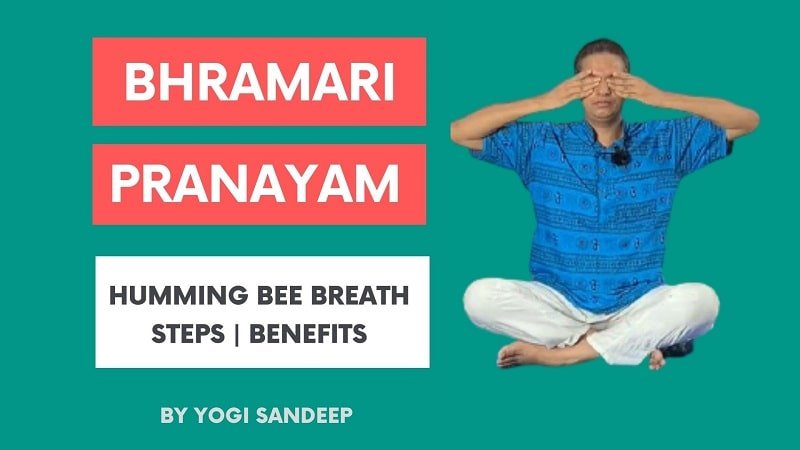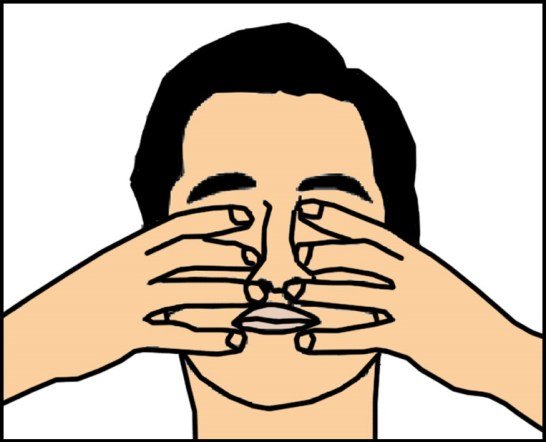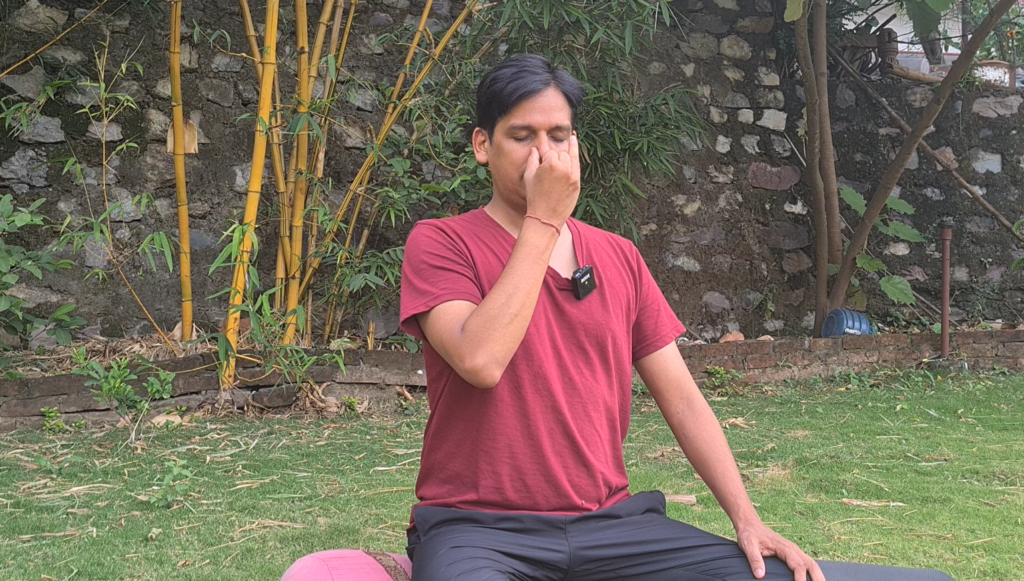Bhramari Pranayama – Humming Bee Breathing

The Bhramari pranayama breathing technique takes its name from the black Indian bee called Bhramari. It is a simple and best breathing technique to eliminate stress and anxiety and calm down an agitated mind. It is a basic breathing method that can be practiced anywhere, at work or at home, and it is a quick way to de-stress.
The buzzing sound of the bhramari pranayama can calm down the wondering of the mind and prepare us for meditation.
The sound of exhalation in Bhramari Pranayama is similar to that of a bee humming. During this breathing practice, your lips are supposed to be closed, and you’re supposed to produce a buzzing bee-like sound in your throat softly. It is beneficial for smoothing out the breath as well as quieting the mind.
Bhramari pranayama (Bee Breath) Steps:
This is usually done after the yoga practice begins with a warm-up. You can, however, practice this afterward. Below is a step by step guide on how to do bhramari pranayama steps:
- Sit comfortably and close your eyes. Take a few deep breaths to settle in and become aware of your mental state.
- Place your index finger slightly over your eyebrows and the rest of your fingers, including your middle fingers, over your eyes.
- Inhale, then with exhalation make a low- to medium-pitched humming sound in your throat for the rest of the breath.
- Keep practicing for next 4~5 times
- keeping your eyes closed, return to your normal breathing.
Adding shanmukhi mudra to bhramari can help to enhance its benefits. Bhramari encourages the inward turning of the senses, which you can augment by blocking some of the outer input with your fingers, which you can enhance by using your fingers to block part of the outer input.
What is Shanmukhi Mudra?
Shanmukhi mudra is a yogic hand motion that symbolizes the closing of the six gates of perception: the eyes, ears, nose, and mouth. The term is derived from Sanskrit words such as shan, which means “six,” mukhi, which means “face” or “gate,” and mudra, which means “gesture,” “mark,” or “seal.”
The Shanmukhi mudra involves closing the ears, eyes, nose, and mouth with the fingers, allowing the practitioner to withdraw the senses and direct consciousness inwards.

How to do Shanmukhi mudra?
To perform shanmukhi mudra, place both hands in front of your face, elbows directed outwards and in line with your shoulders. Place your index fingers on the inner corners of your eyes, middle fingers on either side of your nose, ring fingers above the lips, and little fingers below the mouth with your eyes closed. Close your ears gently with your thumbs. The spine should be upright and the shoulders should be relaxed.
Bhramari with Shanmukhi Mudra (Variation)
Adding shanmukhi mudra to bhramari can help to enhance its benefits. Place one thumb on each earlobe, index fingers softly touching the inner corners of your eyes, middle fingers on the sides of your nose, the ring fingers above the lips, and the pinki fingers just below. Make sure to just apply light pressure to the eyes. Do six more rounds of low- to medium-pitched bhramari, lower your hands, and feel the effects.
Bhramari Pranayama for different health conditions
In the different health conditions listed below, the bhramari versions will most likely work.
Insomnia
A low-pitched, peaceful sound, perhaps accompanied by shanmukhi mudra, could be relaxing for the nervous system and mind.
Sinus infection
A more strong medium- to high-pitched sound would be a better choice to open the passages.
Thyroid problems
Use a medium-pitched sound and add jalandhara bandha to guide sound waves to the throat (chin lock).
Bhramari Pranayama Benefits
Bhramari is a simple, safe technique with a lot of therapeutic benefits. Its strength stems in part from its effects on the autonomic nerve system, like with other pranayamas (ANS). The parasympathetic branch of the autonomic nervous system is activated when the exhalation is longer than the inhalation. Let’s take a look at some of the bhramari pranayama benefits:
- This is the most effective way to gain mental concentration.
- Hypertension can be relieved by using this supplement.
- It reduces tension and soothes the mind.
- It helps to manage high blood pressure and cardiac problems.
- One of the beneficial pranayama for Kundalini awakening.
- Helps calm the mind in preparation for meditation.

Online Pranayama Course for Beginners
Bhramari Pranayama Precautions
- Do not insert your finger inside the ear; instead, lightly press the ear cartilage.
- Keep your mouth closed while creating the humming sound.
Contraindications
None. Anyone, from a kid to an elderly person, can do this pranayama after learning it correctly from a yoga master. The only prerequisite is that this pranayama is performed on an empty stomach.
Bhramari Pranayama FAQs
Some of the common frequently asked questions (FAQ) about bhramari pranayama (bee breath):
How long should you do Bhramari pranayama?
The Bhramari pranayama is typically recommended to be practiced 2-3 times per day. Ensure that you make the bee sound in one breath for roughly 15 seconds each time you perform the Bhramari pranayama techniques.
How can I close my ears in Bhramari pranayama?
Block your ears with your thumbs. Place your index fingers on either side of your closed eyelids, middle fingers on either side of your nose, ring fingers just above your closed lips, and pinky fingers just below your lips.
How do you meditate with humming?
To hum, simply close your mouth and make a steady sound like “mmmmmmm,” or “hummmmmmmm”. Make sure your voice for any signs of strain. For around 1~2 minutes, pay attention to how your body feels, particularly the vibrations in your chest, throat, and brain, and hum on every out-breath.

200 Hour Online Yoga Teacher Training
